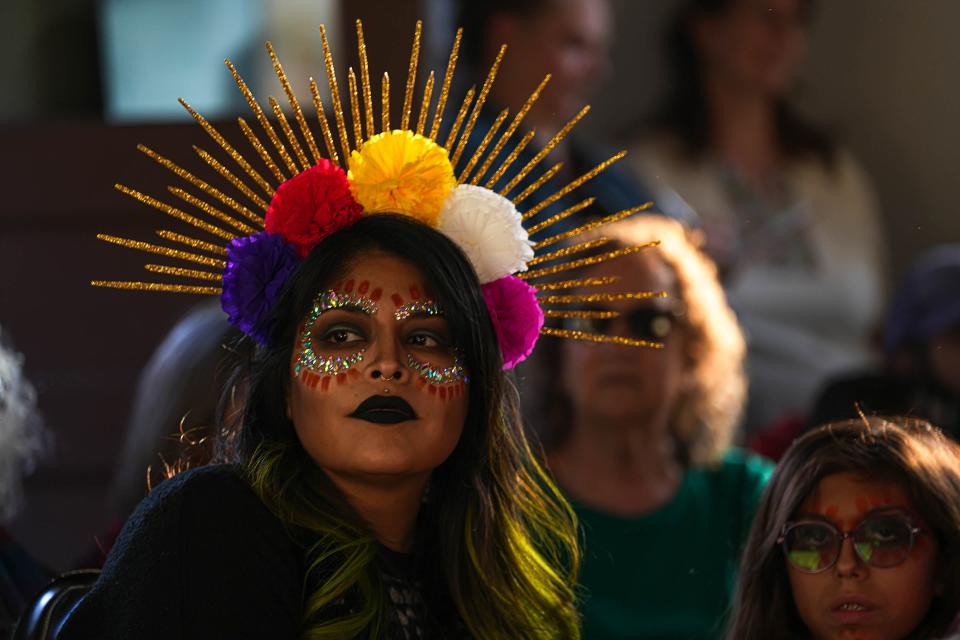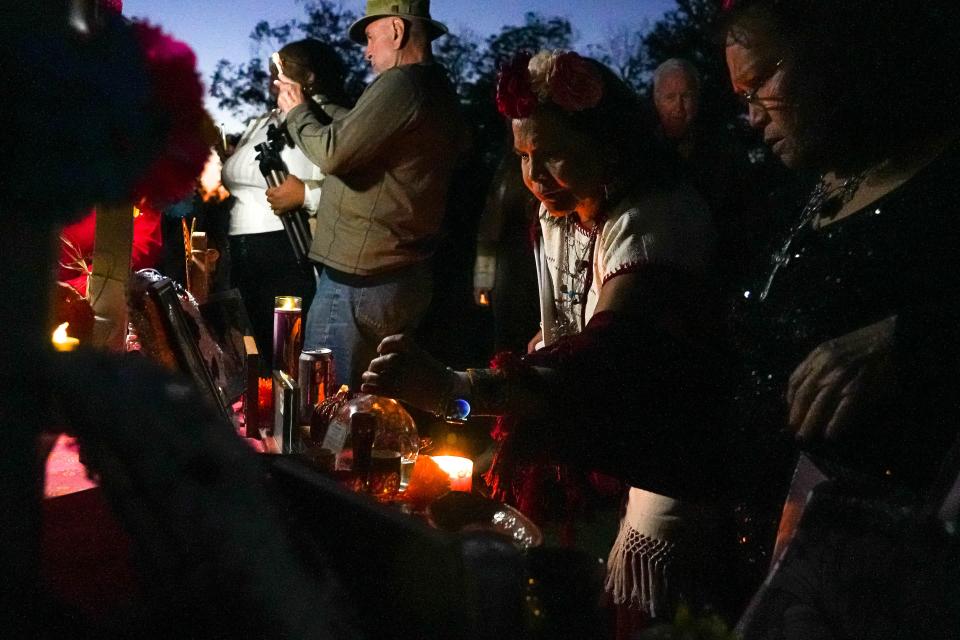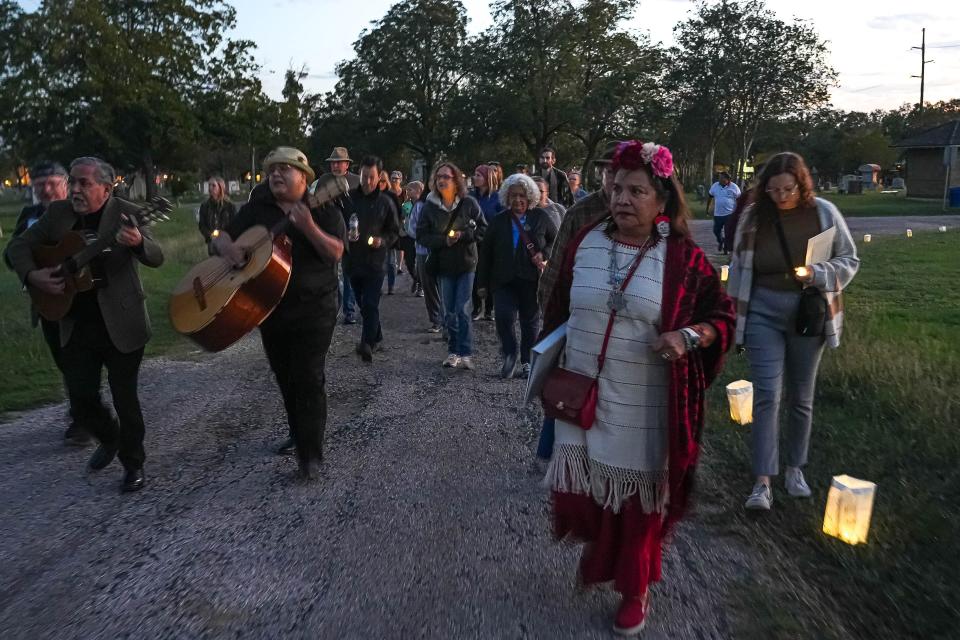Families adorn unmarked graves of ancestors on Day of the Dead at Austin's oldest cemetery
On the eastern edge of the Oakwood Cemetery Annex, Ignacio Moreno’s tombstone was the same color as the evening clouds. It listed the year of his birth, 1904, and the year he died of pneumonia, 1935. It recorded, the reasons for which his granddaughter has theorized many possible explanations, a misspelled variation of his name, “Ignaico Moreno.”
Moreno’s grave was one of about a dozen adorned with cempasúchil flowers (plastic and organic) and candles by a group of interrelated Tejano families who have called Central Texas home for four or more generations. Members of the Moreno, Herrera, Limon and Vasquez families celebrated this year’s Day of the Dead with an on-site altar replete with family photos, pan de muertos, beer, tequila and almonds. They were among more than 50 attendees of the Emma S. Barrientos Mexican American Cultural Center’s Alma y Corazón celebration on Thursday.

They also used the opportunity to indicate, for the first known time in recent history, the locations of the unmarked graves of ancestors.
“Now, our family lived in a very difficult time. I mean, they’re pushed all the way” to the eastern edge of the cemetery, said Hermelinda Zamarripa, Moreno’s granddaughter and an Austin resident who helped organize the commemoration. “People need to know where their history is.”
Zamarripa knew of her grandfather’s tomb because she often brought her mother to the site as an adult. Not all members of the four families — who are associated through marriage — were as lucky. For some, last week's event was the first time they learned about the resting place of relatives they had grown up hearing about.
Paulina Herrera, 71, a first cousin once removed of Zamarripa, located the unmarked burial sites of a grandmother, a grandfather, a great aunt and a great-grandfather last week, ending a search she began three years ago. An employee at the cemetery helped her use the faded stones that identify the site’s numerical and alphabetical grid.

The four tombs were scattered near Moreno’s and other headstones with Hispanic surnames. Oakwood Cemetery is the city’s oldest graveyard. During its early history, it was segregated, leaving Black, Mexican and Tejano families to bury their dead in designated portions of the grounds. In recent years, the city has worked with genealogical and historical organizations to document and better publicize information about the location and identity of remains.
More: Descendants invited to help memorialize ancestors in unmarked graves at Oakwood Cemetery
Herrera commemorated her predecessors by making temporary monuments of metal or wooden placards. She stenciled on the names: Amelia Sanchez, Alberto Herrera, Roberta and Leon Vidal.
These relatives died young, before Herrera was born and some while her parents were still children. Many of them, she said, were cotton pickers in Buda who eventually resettled in East Austin.
As night set, a field of artificial candles and linternas lit the ground with an orange glow. Members of the public listened to live conjunto music, drank hot chocolate and ate tamales and pan dulce.

Carolyn Diaz, 21, a University of Texas student, told the American-Statesman she came because Day of the Dead is an opportunity to reflect on family that has passed away in Guerrero, the state in Mexico where her family is from. Though her family has been unable to return to Mexico to mourn relatives, the yearly occasion has become an important way to do so from the United States.
Retired university administrator Anita Quintanilla, 73, came to the event because she believed it was a form of visibility for Mexican Americans “at a time when we’re being erased in East Austin." The East Austin native and current resident said she hopes the event continues and grows through the years.
In a speech to the crowd, Zamarripa said the occasion was a time to reflect over loss, connection and the legacy of those who have come before.
“Their strength and resilience lives through us,” she said. “It has empowered us through turbulent times.”
This article originally appeared on Austin American-Statesman: Day of the Dead: Austin family finds unmarked graves of ancestors

